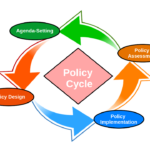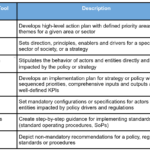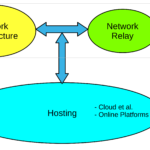Background
- I have personally been engaged in the post-015 agenda since September of 2011. I helped BDP Dir draft the project document that was finally approved in December. I specially contributed to the section on the virtual platform which envisaged using mobile technologies such as SMS to increase the level of participation in setting up the post-2015m development agenda. This is now being called “crowd sourcing the MDGs” which is great as it rides on the crest on the current hype on crowd sourcing technologies.
- Once the project document was approved by BDP and endorsed by UNDG, we started to explore ways in which we could implement the virtual platform. We approached the KM group with the hope that they will engage in the process and be part and parcel of the process. After repeated attempts to engage with KMG, we finally realized that they had their hand full with Rio+20 and thus no interest in being involved in the process. At this point, DGG/e-gov step into the plate and started crafting ideas on the platform. By March of this year we had a draft concept note which was shared with other partners including UNMC, Civicus, GCAP, APC, etc. The document was finalized in May and shared with the UNDG MDG Force, the Strategic Advisory Group (SAG) and th then forming Technical Advisory Group (TAG), both part of the overall post-2105 UNDG/CSO process. The note is attached.
Current Situation
- The overall idea for the post-2105 virtual platform was to find a suitable partner who had the relevant technology to piggyback on it and host the site. We were well aware that developing a new platform from scratch was not viable or feasible given the tight deadlined and the budget allocated for post-2015. In this light, a partnership strategy that including approaching major IT companies as well as Global Compact members was in the cards.
- We also developed a governance model that included both SAG and TAG (names that we coined and were widely accepted by post-2105 stakeholders) and took into account the fact that this initiative is not the typical UN initiative but rather a multi-stakeholder one where non-UN actors and organizations have equal footing in the process. This crucial point is none that is usually forgotten by UN players that keep demanding that the virtual platform should be 100% aligned with UN/UNDG communication strategies and official web sites. This can certainly be the case if and only if civil society partners are willing to endorse such approach. This might certainly be the case in most cases but we have to be flexible her and allow CSOs to provide critical inputs into the process that might not reflect the official views of the UN. The issue of co-branding is one that needs to be managed strategically throughout the process.
- BDP Directorate organized a couple of meetings in May and June to take stock of the process and suggest ways to expedite project implementation. At the first meeting which I could not attend as I was on mission, Olav recommended that Teamworks should be the de facto platform for the post-2015 virtual site given the support BDP has given to it and its successful use in the Rio+20 dialogues. In one sense, this came as a blessing as securing the support of any other existing platform could have taken much more time and effort. At the end of the second meeting on 12 June, and reacting to a request from UNMC, Olav appointed me as “project manager” for the virtual platform component.
- From our vantage point, we assessed that TWs, in its current incarnation, had several critical limitations that could hampered the multi-stakeholder nature of the project. One critical one was the TWs requirement of having to log in to see any information. The post-2015 virtual platform needs to be a public space and users should only be required to log in when they want to make contributions or add content to the site. And we should also consider the possibility for allowing anonymous inputs in some areas of the site. The second critical issue was the look and feel of TWs which seems utterly complex for the purposes of fostering dialogue among a wide variety of stakeholders.
- With this in mind, we recruited the services of a designer who provided several options. We shared the design with UNMC, GCAP and Civicus and agreed on one that was used as a place holder for the virtual platform. In the meanwhile, weekly meetings with the TWs technical team started to take place and focused heavily on the technical aspects of the platform. The meetings are still taking place and we continue to be part of them.
- I also prepared a Results Framework/Annual Work Plan for the virtual platform which has been allocated a total of USD 500,000. The document is attached. The document was shared with BDP Directorate, UNMC, GCAP, Global Pulse and Civicus. We also held a face to face meeting to discuss the proposal and submitted the final version to BDP Directorate for approval. As fas as I know, BDP has approved the budget.
- By the end of July, TAG meetings started to take place on a weekly basis. Draft ToRs for TAG were initially completed by UNMC. I provided track changes to the document which was endorsed by the TAG at the first meeting at the end of July. In terms of TAG, current representation in heavily biased towards the UN system. As it stands now, TAG only counts with the involvement of two CSOs and two representatives from the private sector.
- SAG instead has heavy representation from CSOs and has so far met two times. While TAG seems to be moving at high speed, SAG (or what was called the Outreach Group) seems to be moving at a slow pace.
Emerging Issues
- One of the larger issues that has emerged is the need to create/strengthen SAG capacity to deal with content issues. As it is now, TAG has been dealing with this but it does not fit its mandate. Being a multi-stakeholder initiative, content that needs to be placed on the web site by partner organizations directly engaged in the process needs to be internally vetted (the same should not apply to user driven content once the platform is launched) before it is posted on the platform. This is a critical issue that needs to be addressed as soon as feasible as content not technology is what will drive the site. It is thus recommended that SAG creates a small multi-stakeholder editorial team that could also include DPI. Otherwise the launching of the site could be delayed.
- It is also important to keep the role of the TAG to what it should be: a technology driven group providing advise on the features and all other related issues to the virtual platform. As it is now, TAG is getting involved in both content and communication issues (for example, a large representation from UN DPI joined a recent TAG meeting!) which in my view is risky and can backfire on the overall process.
- Now that TWs is fully on board with the process, the role that DGG/e-gov can play in the process might need to be re-assessed. As it is now, we seem to have a very complex structure in place which can slow down both decision-making processes and project implementation. On the UNDP side alone, we have UNMC leading the mobilization and campaign side but also getting involve in the technology side. On the technology side, we have DGG/e-gov and TWs working. On the latter, the fact that TWs owns and knows the technology they have in place puts DGG/e-gov on a complicates situation as the latter has not way of managing the actual implementation of the features required for the virtual platform. In a sense, DBB/e-gov is in an uncomfortable situation of the middle-person, trying to drive a process over which it has little to no control. It is thus recommend that BDP revisits this structure and finds ways, together with UNMC, DGG and TWs to streamline the process and agree on a clear division of labor.
- In addition to what it is doing now, DGG/e-gov can also be instrumental in supporting the process in the following ways:
- Ensuring that technology driven discussions remain transparent and are clearly understood by non-technical people. DGG/e-gov has plenty on expertise on running platforms that use the same technological platform as TWs (called DRUPAL) and knows well what is and what is not possible
- DGG/e-gov has also had plenty of expertise in working with CSOs and technology. It has also been part of the launching on the Internet Governance Forum which is financed by the UN Secretariat and has a multi-stakeholder character. DGG/e-gov has repeatedly brought this example into the various discussions and meetings
- DGG/e-gov also has expertise on mobile technologies and crowd sourcing and can be a good resource to ensure that initiatives such as MyWorld and Open MDGs do take into account those who are not connected to the Internet (which is about 4.5 billion people in the world) but should be given a voice in the process
Cheers, Raúl





